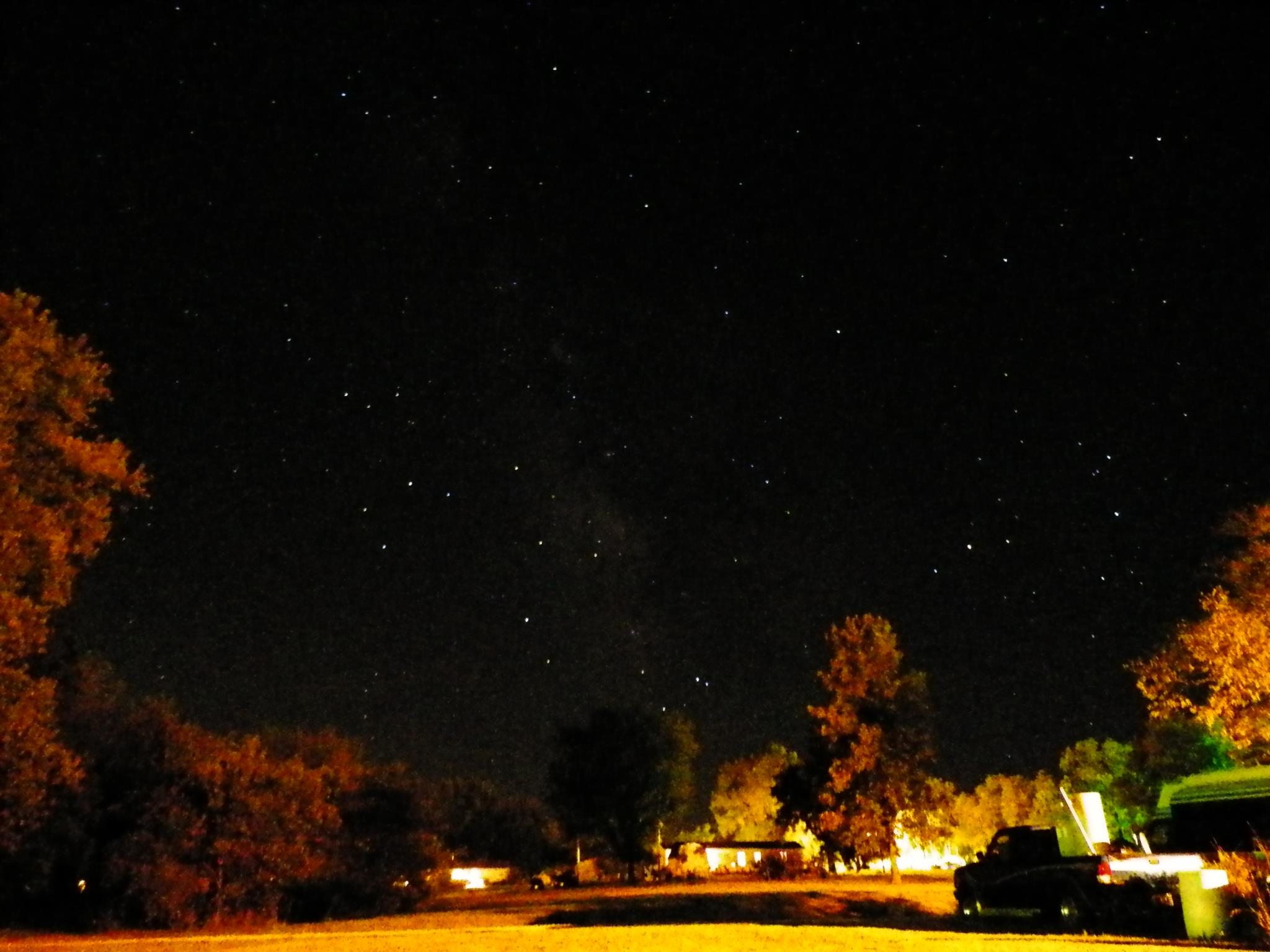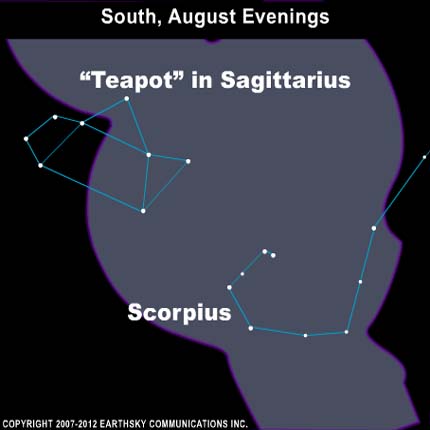Tonight – August 26, 2017 – look for the Teapot, an easy-to-see pattern of stars, located toward the center of our Milky Way galaxy. This month’s new moon came on August 21. On the night of August 26, the waxing crescent moon will set in the evening, to give you some dark time to view the Teapot at late evening. Be sure to look tonight because each following day will find the waxing moon brighter in our sky and out longer after sundown for the next one and one-half weeks. The two-week period of time from about September 10 to 24 will provide another excellent time to trek out to the country for an edgewise view into our own galaxy, the Milky Way.
Click here for the moon’s setting time, remembering to check the moonrise and moonset box.
The chart above is aimed toward the galaxy’s center, which is located some 30,000 light-years away. Many people find it by locating the prominent Teapot in Sagittarius.
The Teapot is what’s called an asterism. It’s not an official constellation; it’s just a noticeable pattern of stars on our sky’s dome. The Teapot is the most familiar part of the constellation Sagittarius the Archer.
Enjoying EarthSky so far? Sign up for our free daily newsletter today!

Unlike on the chart or photo below, if you find a dark sky in the evening around now, you can look at the starlit band arcing completely across the sky. When you see this hazy arc, you are peering edgewise into the disk of our own Milky Way galaxy.
The starlit trail of the Milky Way seems to bulge just before it reaches the southern horizon. You can see this bulge in the night sky, and it marks the approximate location of the Milky Way’s center. This part of the Milky Way is vastly more spectacular in a dark night sky than it appears here on our chart!
The constellations Sagittarius and Scorpius lie in this direction as well.
The most important thing about seeing the Milky Way is to find a dark location. In the months of August, September and October – if you go someplace really dark – simply look up in the evening. The beautiful panorama will be waiting for you: a hazy band stretching all the way across the sky. The haze consists of myriads upon myriads of stars.
So take advantage of the the moon-free evenings, and go stargazing. And if you have them, bring along a pair of binoculars. If you scan with binoculars along the Milky Way, you’ll find many lovely clusters of stars. No need to know their names to enjoy them!

Bottom line: The center of the Milky Way lies in the direction of the Teapot in Sagittarius. If you are in the Northern Hemisphere, look southward in the evening. If you are in the Southern Hemisphere, look overhead.
Help support EarthSky! Check out the EarthSky store for fun astronomy gifts and tools for all ages!












